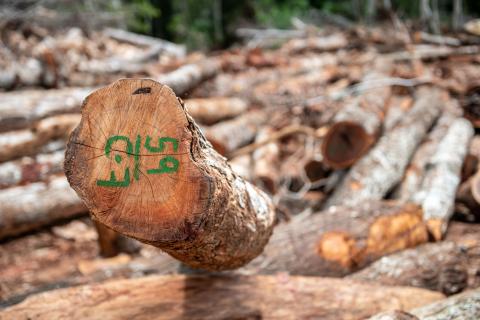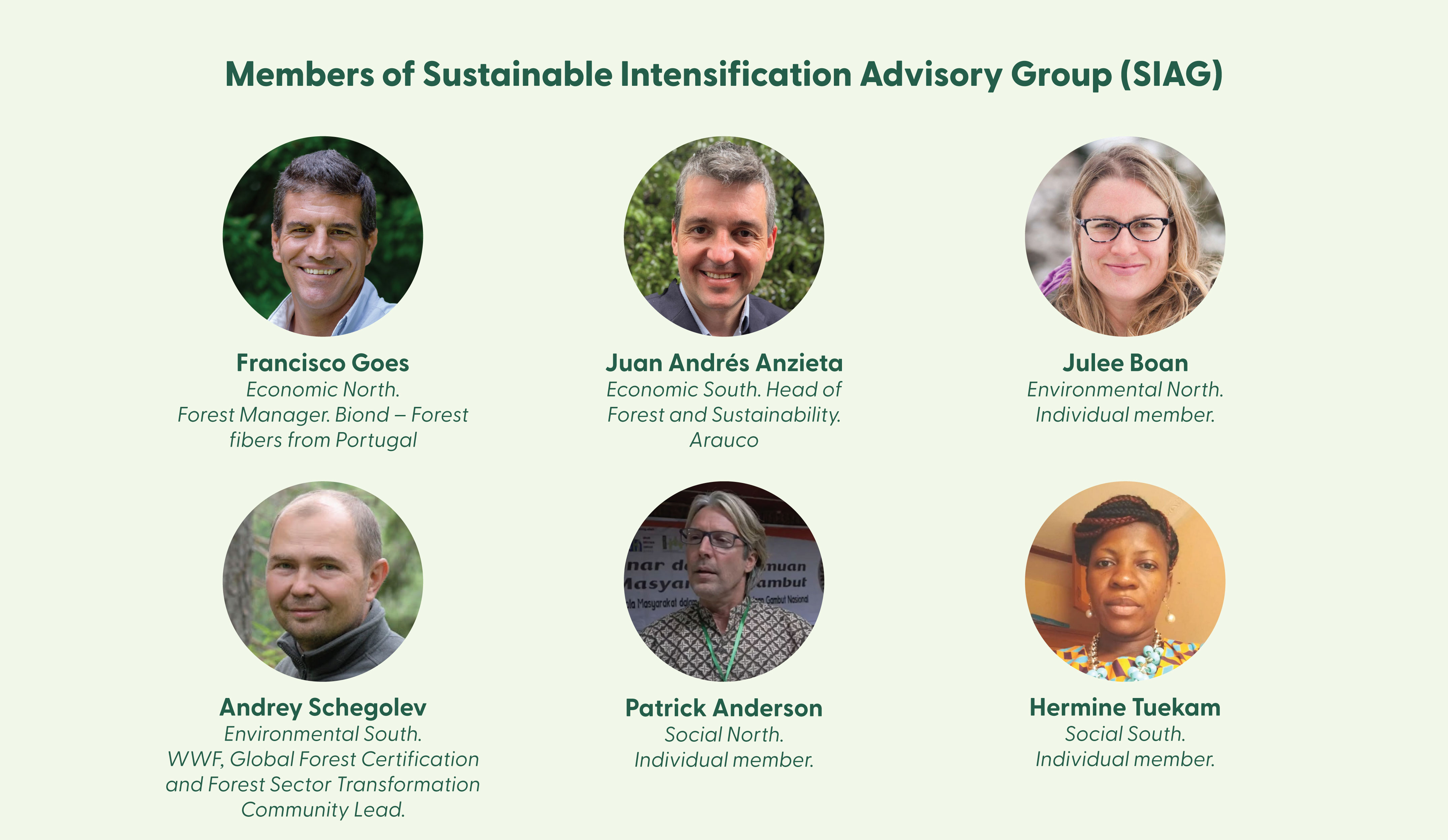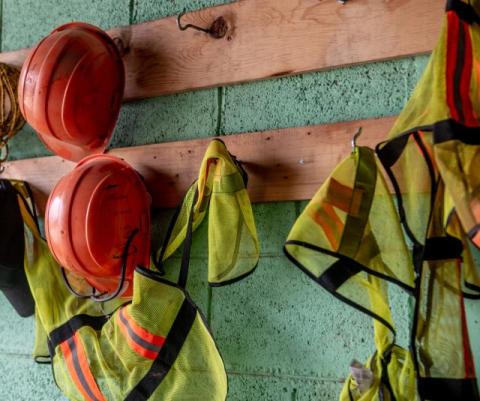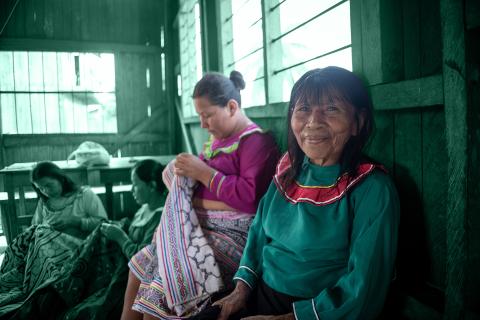
El FSC está participando en negociaciones relacionadas con este complicado tema, trabajando con los actores sociales para responder a preguntas difíciles. ¿Cómo puede el sector forestal trabajar para obtener una mayor producción y una mayor protección al mismo tiempo? ¿Y qué papel puede desempeñar el FSC para que esto suceda?
Se ha propuesto una intensificación sostenible de la producción como parte del enfoque para abordar estas cuestiones apremiantes, reforzada por una serie de intervenciones que abarcan desde reformas de la gobernanza hasta innovaciones tecnológicas.
A menudo el término intensificación se utiliza en relación con la madera: estrategias o métodos para aumentar la producción de madera. Sin embargo, esta definición puede y debe utilizarse para referirse a estrategias más amplias y a otras formas de producción forestal, como los servicios del ecosistema.
Con este objetivo, el FSC inició el establecimiento de un foro de soluciones de intensificación sostenible (SISF, por sus siglas en inglés), en estrecha colaboración con el Grupo Asesor de Intensificación Sostenible (SIAG). Este foro está compuesto por seis miembros de las cámaras ambiental, social y económica del FSC, tanto del hemisferio norte como del hemisferio sur.
Una discusión más amplia con todos los miembros del FSC y otros actores sociales en la Asamblea General FSC, prevista para octubre de 2020, aportará recomendaciones al Consejo Directivo, que decidirá cómo llevar adelante la intensificación.
Los temas clave que se han identificado para este proceso son:
- Justicia social
- Riesgos y salvaguardias
- Ecosistemas y biodiversidad
- Eficiencias
- Relevancia en el paisaje
- Mejora de las herramientas FSC
Un documento de debate elaborado por Lars Laestadius titulado 'Forestry Intensification for Shared Value' (Intensificación forestal para el valor compartido) analiza la intensificación convencional en la silvicultura y su relación con la certificación FSC.
Obtenga más información sobre el Proceso de Aprendizaje de Ingeniería Genética del FSC, que es una iniciativa destinada a obtener conocimientos suficientes y fiables sobre los avances de la ingeniería genética en la silvicultura fuera de las áreas certificadas.

How do we co-create to identify the contributions of FSC-certified plantations in the wider landscape?
Co-creating shared values in intensified forests involved a collaborative effort among various stakeholders, members, experts, certificate holders, each bringing perspectives and expertise to the discussions. Through extensive engagement sessions, workshops, and forums, we fostered an inclusive environment where ideas could be exchanged.
Main supporters of developing shared values are the Sustainable Intensification Advisory Group (SIAG), established by the FSC Board of Directors, the SIAG consists of six members, equally representing the interests of the social, environmental, and economic chambers of the FSC membership. SIAG is tasked with providing a balanced understanding of sustainable intensification and shared values, promoting broader engagement, knowledge-sharing and collaborative initiatives to support the development of FSC solutions.
"We are a dedicated team of 6 FSC members around the world working on a voluntary basis since 2018 to support the
FSC in it’s efforts to achieve sustainable forest management in a context where forest intensification is no longer
a hypothesis but rather a reality”
- SIAG members






